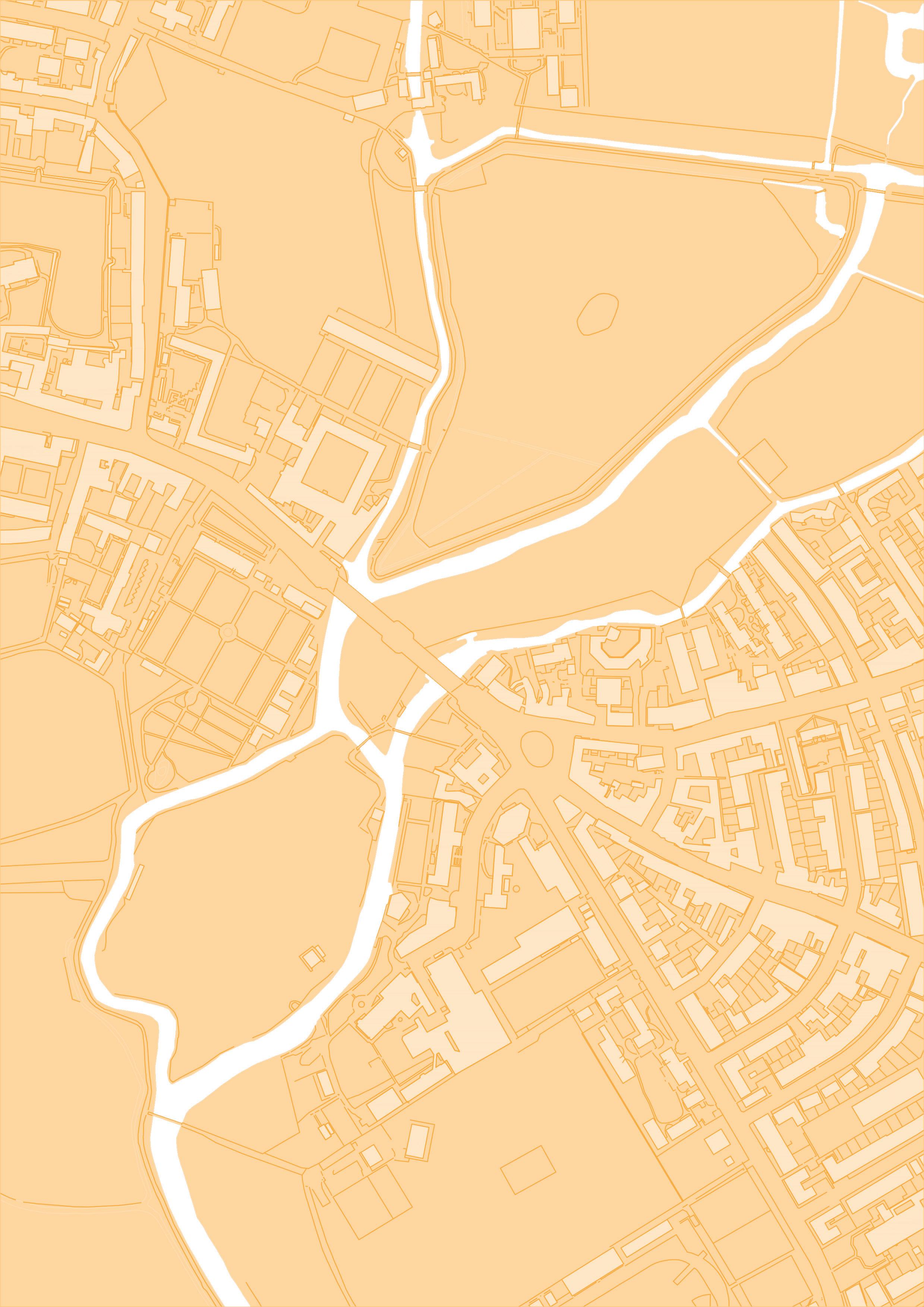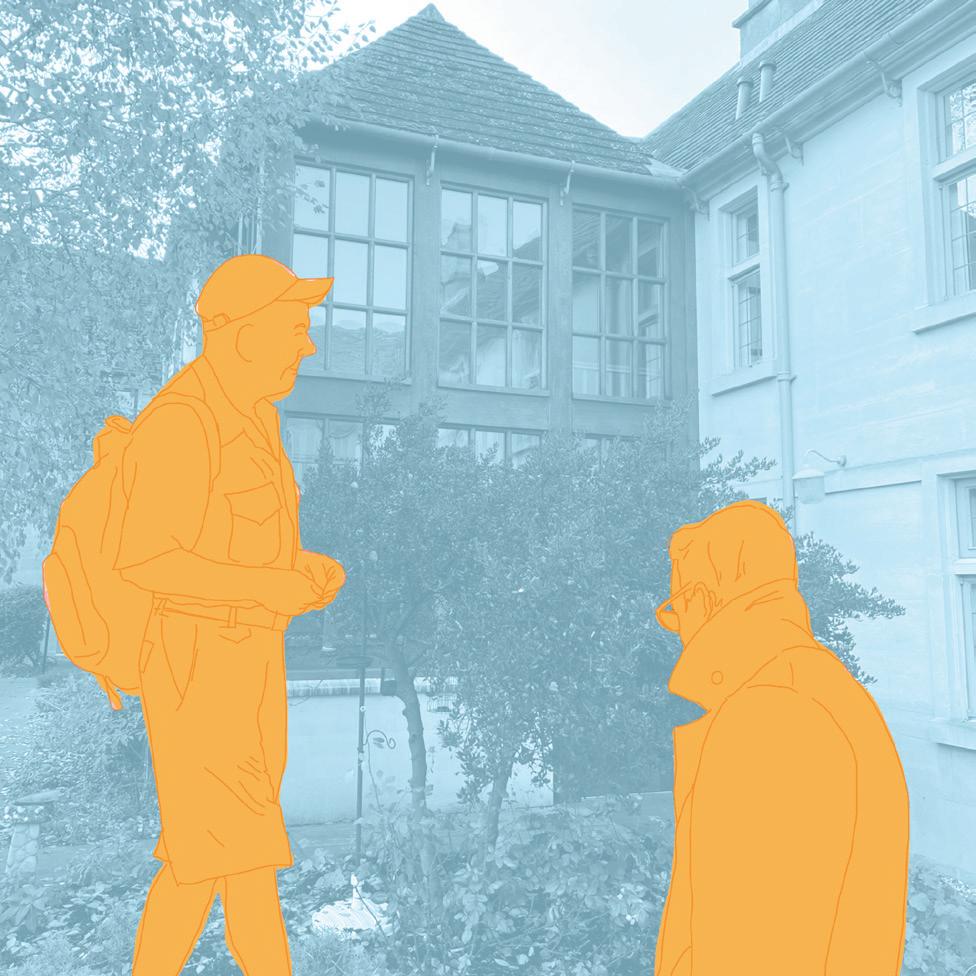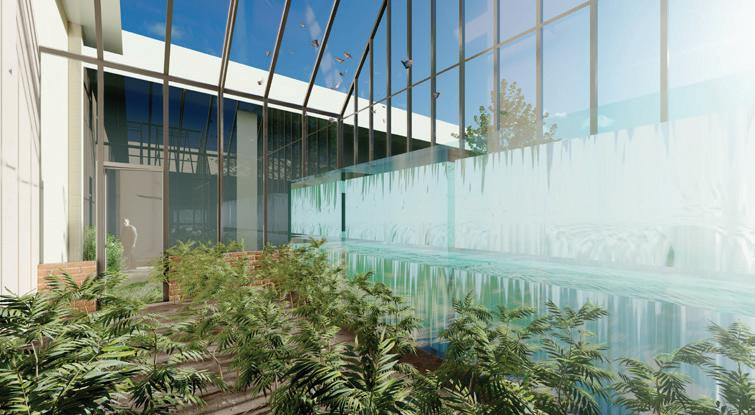
10 minute read
2.0 BACKGROUND TO THE RESEARCH
2.1 LEGISLATION TO CONTROL SMOKE
Thick smoke-filled winter fog has badly affected life and trade in Britain's metropolitan environment. Francis Albert Rollo Russell, son of former Prime Minister Lord John Russell, stated that house smoke was primarily responsible for defacing the city's historic architecture, blocking sunlight, destroying vegetation and, most importantly, endangering people's health between 1837 and 1910. Furthermore, due to the deterioration of the pre-existing lung illness, there was a lack of vigilance in preventing smoking during the extended fogs of late January and early February (Mosley, 2003). Households generally utilise energy for space heating, water heating, air conditioning, lighting, refrigeration, cooking, and clothing drying. In the 1940s, 19,056,00 dwelling units with 700,00 households used coal as a primary heating fuel (Leibson, 1988). In Victorian and Edwardian Britain, smoke pollution from household fireplaces was acknowledged as a severe urban environmental issue. Sulphurous household smoke emissions, for example, have been linked to an increase in respiratory disease deaths. Emissions of coal from more than a million chimneys coupled with dense fog may have greater lethal repercussions than animal slaughter (Mosley, 2003).
Advertisement
2.2 SMOKE CONTROL AREA IN OXFORD
The free-standing coal fire of both the nineteenth and twentieth centuries was a focal point concerning family life, and the authorities dreaded it. The ramifications of enacting legislation are the fact that obstructed a citizen's ability to enjoy the very widespread institution of having an open coal fire. The authorities are still reluctant to take serious action against domestic smoking (Mosley, 2003). The local government-designated smoke control area in Oxford, on the other hand, has implemented a Clean Air Act. Its purpose is to prevent considerable smoke emissions from chimneys, furnaces, and boilers. Furthermore, unless in "exempt" appliances, unlawful fuel usage within Smoke Control Areas (SCAs). 2019 Council. According to British Coal Cooperation Coal Research Development, British household coal-fire appliances for the smoke control region and emissions from these comply with United Kingdom regulations. As a result, there is a lack of public knowledge about the use of coal in the home, as well as difficulties in handling and storing coal, cleaning ashes, and delivering coal in urban areas (Leibson, 1988)


2.4 LOCAL AUTHORITIES ACTION PLAN

Oxford's central business district has been designated as an Air Quality Management Area (AQMA) considering 2001, with amendments in 2003. In 2006, an Air Quality Action Plan was prepared in collaboration with Oxfordshire County Council and incorporated into the Local Transport Plan. Following the discovery of eight air pollution hot sites in 2008, a city-wide AQMA was issued in 2010. As a result, in 2013, the city created a city-wide Air Quality Action Plan (AQAP), which attempts to take an integrated approach to examining steps to decrease carbon and air pollution emissions. This is consistent with the strategy used under the city-wide Low Emission Strategy (LES) to investigate additional alternatives for integrating local policy. (Pitman, 2014)
St. Clement's has historically had the highest NO2 levels. This road connector is in the city's business district and is managed by Oxford City Council. The road is a vital city centre thoroughfare that connects east and west Oxford via The Plain Roundabout. St Clement's St is the most direct route from the east to the city centre.
3.0 THE RESEARCH QUESTIONS
1. How encounters the provision for and upkeep regarding the fireplace including any associated services evolved over time?
2. Fireplace in the modern period usage should be sustainable and carbon-negative to maintain a social environment and cultural elements without causing pollution?
4.0 THE RESEARCH APPROACH
This research focuses on the social status of old people as well as the fireplace at Stone's Alms House in St Clements, Oxford. The research is based on a mixed methods approach that analysed 53 years of administrative data from social housing-related support agencies in England, as well as interviews with one of the house's users.
The administrative data are from Oxford City Council has set a new Air Quality Action Plan (AQAP) for the 2021-2025 period, aiming to reduce air pollution. This is the first time any UK local authority has set a city-wide air pollution reduction target through its AQAP. The plan, which is based on the 2014 Air Quality Progress Report, identifies eight air pollution hot spots identified in the 2008 Detailed Assessment Report. The AQAP aims to promote clean air, public health, and social justice, making it a significant step towards achieving these goals (Council, 2021). The social status of the fireplace in each room, occupied by a single user, is critical for sustaining mental health and resolving various difficulties among the twenty-two Alms home users.
The monitoring result of the Nitrogen Dioxide diffusion tube was analysed using various data sources to align with air quality objectives. This analysis highlighted legislative and service issues, such as wind direction during winter and chimney smoke in Oxford. The range of data sources was brought together in analysis to explore the usage and environment of the fireplace after the chimney’s smoke legislation in the UK. The following sections will discuss aspects of these journeys which raise the design of the intervention of the fireplace in connection with Stone’s Alms house.
4.1 THE NUMBER OF ALMS HOUSE OWNER
Stone's Building, the original foundation, comprises four one-bedroom flats and one double unit for a couple, grouped in three blocks around a central lawn.
The accommodation in two other blocks, refurbished in 2019, includes eight flats arranged around two staircases, with an additional one-bedroom flat adapted for ambulant disabled individuals or couples. Each flat features a living room, separate kitchen, bedroom, and en-suite bathroom, designed for independent living. Stone's Court is a vibrant space with residents from diverse backgrounds and histories, fostering a sense of community and activity.
The Alms house, designed within Smoke Control Areas (SCAs), features a fireplace that is non-functional due to its placement within the house. This lack of social connection hinders the enjoyment of the fireplace, as it is often removed during the day and night.
in total of 22 occupant ground floor (single room) social connection social connection upper floor (couple room) going out for grocery visiting garden









Elderly activity during winter in


Seeking for nature sound and vision
















Elderly going out for grocery winter





5.0 THE FINDINGS
The fireplace of the Alms house is not as unique as the previous year starting 1970s but it is gathered as part of the social attributes for the needy and most importantly elderly who lost their family.
The research reveals that while the fireplace, used for heating purposes, can cause pollution in St Clements, the elderly can still maintain social connections through its function, despite the serious mental issues and loneliness experienced by the elderly.

Loneliness is a significant issue experienced by the elderly, who often feel isolated due to their family members' busy schedules, studies, and social activities. This lack of company can lead to depression and a decrease in mobility. The loss of friends, family, and income further contributes to the feeling of loneliness among the elderly.
After retirement, many elderly individuals face numerous challenges in their lives, including a shift from their traditional jobs to a more sedentary lifestyle. This inactivity often stems from the belief that they are not fit for any new job, causing physical, mental, and financial issues. Many elderly individuals spend most of their time in their home environment, unable to engage in any other work, resulting in a lack of fulfilment and fulfilment in their lives. Some older people have higher degrees of despair, feel more unsafe, and are burdened.
According to the study, the fireplace stays shut down but its focal point would be lost without social interaction from elders or Alms home users, and the name and function of the fireplace remain significant to British cultural features.
Wind Direction
Smoke control Area
Clean Air Act
Air Quality Management area
History of Alms house Usage
Coal Delivery
Activity Movement
Wood and Coal
The impact of societal health and social conditions, particularly those affecting pragnant women, is significant.
1 The gathering area is designed to provide a warm and tranquil atmosphere.



2 The use of fireplace equipment is intended to create a lively focal point area.


3 The fireplace serves as a central focal point and hearth.
4 The fireplace was removed due to a non-running fire, as per the Smoke Legislation.
5 The lack of decoration in the focal point does not attract users to stop by.
6 The facility is empty, and there is no specific location for lively gatherings.
5.1 THE SOUNDS OF A BIRD AND FIREWOOD BURST, AND CRACKLE IS SIMILAR.

Birds have a distinct auditory world, characterised by sound waves regarding a wavelength of Hz. This feeling is a temporal phenomenon that necessitates the use of a biological, mechanical, or electrical transmitter and receiver. Birds communicate via a variety of noises, including clicks, hammering, wing noise, calls, and songs. Biological communication includes the exchange of information, recognition, and memory. The richness of an audio experience in the open air cannot be replicated in recorded performances (Cox, 2008).
On the other hand, were based on earlier findings from research that employed self-evaluations to suggest that bird songs relieve stress more than other disturbances such as traffic noise. Bird melodies and flowing or running water are common natural noise makers. Although not statistically significant, there appears to be a trend according to our prediction that "traffic noise" would have the least stress reduction and "bird song" would have the largest stress reduction. Noises from birds, provided at an ecologically realistic sound level, may alleviate physical stress by masking noise from urban traffic (Hedblom, et al., 2019)
The statement is indicating a lack of usage.
Birds' sound is transmitted to the fireplace via the chimney.


The proposed solution is to transform birds' habitats into nested spaces.

Birds song +
Birds song
5.2 HEATING TECHNOLOGIES FOR WORLD WIDE GREENHOUSE APPLICATIONS






A greenhouse heating system is crucial for enhancing thermal energy storage and transferring excess heat to the heat storage area. This heat is then recovered at night to meet the greenhouse's heating needs. A composite system uses the same system for heating and cooling in winter. The overall performance of a greenhouse coupled with a heating system is influenced by factors such as the size of the greenhouse, cover material, heat storage method, cultivation type, desired indoor air temperature, greenhouse location, and external ambient conditions.
Water tanks of various sizes and temperatures have been used to store water in greenhouses. In a 30 m2 polyethylene-covered greenhouse, the north side was insulated to prevent heat loss. Solar radiation flow on tanks was enhanced by reflecting from the north wall with 0.7-0.8 reflectivity (mylar) reflector sheets. In a 40 m2 glass house, the interior air temperature was kept 4-5 degrees Celsius higher than the lowest outside temperature. In a 95 m2 glasshouse, a reflecting north wall kept the indoor air temperature 3-4°C warmer.
A greenhouse's north wall is insulated and painted black on the inside to store thermal energy, especially in cold climates. This design collects solar energy and decreases heat losses, increasing greenhouse air temperature by 1-10°C and meeting 35-82% of heating requirements. Although building raises greenhouse gas emissions, it reduces the need for pipelines, air pumps, and power. Water tanks/barrels are cost-effective and efficient due to their reduced space utilization, reducing annual temperature fluctuations.
Passive Solar Greenhouse

Heat gain during the day
Heat return during the night
Solar Radiation Convection
Interior (living) exterior (planting) water tank







6.1 THE TWO GLASS BLOCK

The Greenhouse design was applied to Stone's Alms house, focusing on space layout and incorporating a variety of occupied spaces. The original design style and sense of identity were maintained, with a glass block design in the focal point and a covered chimney tower. The Social Housing architectural elements were modernized with glass walls and aluminium framing.
Two glass blocks were designed on the east and west sides of Stone's Almshouse, accommodating four single and couple rooms. The original building's rooms were kept secure to maintain its form and covered area, while the space was extended for elderly gathering and activity.
The outdoor connection to nature is maintained through the use of logs, which provide a vibrant and calm living environment. This connection is particularly beneficial for elderly individuals, who can connect emotionally and physically with the woods. The log also brings the fragrance of nature to the living room.
















6.4 THE CARBON-NEGATIVE FIREPLACE



The Alms house features a fireplace design that provides heating and calmness, promoting social interaction, especially among the elderly. The design incorporates carbon-negative features, enhancing the living area's environment through the interaction of heating and bird sounds.








7.0 BIBLIOGRAPHY
Charity, O. C., 2022. About of City Oxford Charity. [Online]
Available at: https://oxfordcitycharity.org.uk/about-city-of-oxford-charity/ [Accessed 6 November 2023].
Council, O. C., 2019. Smoke Control Order. [Online]
Available at: https://www.oxford.gov.uk/info/20216/air_quality_management/216/domestic_smoke_control_areas
[Accessed 3 November 2013].
Council, O. C., 2021. Oxford City Council Air Quality Action Plan 2021-2025, Oxford: s.n. Cox, B. L., 2008. Becoming-Bird: Sound, Image, Movement, Santa Cruz: Digital Art & New Media Program, University of California.
Crafti, S., 2007. The Fireplaces. In: R. Beaver, ed. Details for Living. Australia: The images Publishing Group, pp. 167-181.
Crossley, A., 1979. Charities for Poor. In: C. Elrington, ed. The Victoria history of the county of Oxford. Oxford: Oxford University Press, p. 462.
Crossley, A., 1979. Other Municiple Charities. In: C. R. Elrington, ed. The Victoria history of the county of Oxford. Oxford: Oxford University Press, p. 468.
Dresbeck, L., 2014. The Chimney and Social Change In Medieval England. Albion, 3(1), pp. 21-32.
Godfrey, W. H., 1955. The English Alms-House. London: Faber and Faber Limited.
Harrington, G., 1977. The wood-burning stove book. New York: Collier Books.
Hedblom, M. et al., 2019. Sounds of Nature in the City: No Evidence of Bird Song Improving Stress Recovery. Promoting Healthy and Supportive Acoustic Environments: Going beyond the Quietness, 16(8), p. 1390.
Jenkins, S., 2023. OxfordHistory.org.uk. [Online] Available at: https://www.oxfordhistory.org.uk/streets/inscriptions/east/stones_almshouses.html
[Accessed 6 November 2023].
Kevin N. Laland, G. R. B., 2011. A history of evolution and human behaviour. In: Sense and Nonsense: Evolutionary Perspectives on Human Behaviour. New York: Oxford University Press, pp. 14-15.
Leibson, I., 1988. Residential Sector. In: The Use of Coal in the Industrial, Commercial, Residential, and Transportation Sectors. Washington DC: Transportation Sectors, pp. 21-23.
Manago, A., 2004. Future directions of life with fire -from Japanese -American studies of fire places and open hearths. In: American studies of fire places and openhearths. 71 ed. s.l.:Quarterly Journal CEL, pp. 83-85.
Matsunami, H., 2005. Whether increased familiarity are caused byfire places. In: A research for effects of life with fire.. s.l.:Quarterly Journal CEL, pp. 49-51.
Mosley, S., 2003. Fresh air and foul: the role of the open fireplace in ventilating the British home, 1837–1910. Planning Perspectives, 18(1), pp. 1-21.
Nigel Goose, S. B., 2009. ALMSHOUSE RESIDENCY IN NINETEENTH CENTURY
ENGLAND: AN INTERIM REPORT. Almshouse Residency in Nineteenth Century England: An Interim Report, 12(1), pp. 65-75.
Pitman, R., 2014. 2014 Air Quality Progress Report, Oxford: Oxford City Council. Richards, D. H., 1961. The Chimney. Journal of the British Archaeological Association , 24(1), pp. 67-79.
TamakoshiI, S., SHIMAI, S., SOGO, S. & YAGI, A., 2011. The Psychophysiological Effects of the Fireplace. PSYCHOLOGIA, Volume 54, pp. 68-79.
Tomkins, A., 2015. ALMSHOUSE VERSUS WORKHOUSE: RESIDENTIAL WELFARE IN 18TH-CENTURY OXFORD. Family & Community History, 7(1), p. 46.



